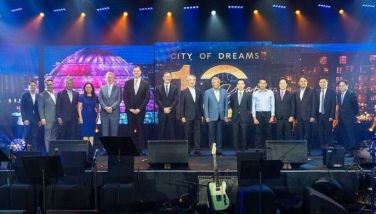Privatization is not the culprit

It was back in 2011 when the government announced that it was undertaking its first infrastructure project under the public-private partnership (PPP) program of the Benigno Aquino III administration with the privatization of the entire maintenance and operation of the Light Rail Transit Line (LRT) Line 1.
Then in 2015, a private consortium led by Ayala Corp. and Metro Pacific Investments Corp. assumed the operation of LRT-1, taking over what it described as a severely deteriorated elevated train system. Previously, LRT Line 1 had been operated by the government through the Light Rail Transit Authority (LRTA) and the Department of Transportation and Communications (DOTC).
The Light Rail Manila Corp. (LRMC), which won the P65-billion contract to operate and expand LRT-1 all the way to Bacoor, Cavite over a 32-year period and was the lone bidder in the PPP deal, noted that it is the oldest train line in Metro Manila where maintenance has been a challenge over the years.
Last February, the Department of Transportation (DOTr) approved a price increase that will take effect on April 2.
According to LRMC, in the past 10 years of operating and maintaining the 40-year-old railway line, this will only be the second time that LRMC has been allowed to implement fare adjustments for LRT-1. LRMC has since introduced new trains, station upgrades and better service efficiency, and has completed Phase 1 of the Cavite Extension Project, opening the extension for commercial operations.
Under the concession agreement with the DOTr and LRTA, the company is allowed to adjust fares every two years. The LRMC requested fare adjustments in 2016, 2018, 2020 and 2022, but all were deferred. The deferred fare hikes resulted in a fare deficit of P2.17 billion as of November 2024.
Unfortunately, the recently approved fare hike for the LRT-1 has been criticized, with some blaming privatization as the root cause of what they call an unfair and unreasonable increase.
But while the “privatization is to blame” argument is a popular political talking point, it is misguided and misleading. In reality, privatization is not the reason fares are rising – operating costs, inflation and the need for continued improvements are. More importantly, without private sector investment, LRT-1 would be in a far worse state than it is today.
Rather than condemning privatization, we should be asking a more pressing question: Without it, would the government have been able to finance, maintain and expand the LRT-1 system to meet the growing demands of Metro Manila’s commuters?
One of the most common criticisms is that private companies like LRMC are only after profit and that this fare hike is driven by corporate greed. However, this argument ignores a fundamental truth: LRT-1 is not just a public service – it is an expensive, complex system that requires billions of pesos in investment to survive and remain functional.
Public transportation systems worldwide operate on one of two models: first, government-run heavily subsidized systems that require continuous taxpayer funding; and second, PPPs where the government regulates and private companies invest in upgrades and operations in exchange for a share of fare revenues.
The Philippines chose the second model because the government cannot afford to run an efficient rail system on its own. Without private sector involvement, LRT-1 would have continued its decline, much like the MRT-3 experienced in the past due to chronic underfunding, mismanagement and bureaucracy (read: procurement challenges).
Since LRMC took over in 2015, it has made significant improvements by rehabilitating the existing system and extending the LRT-1 System at a cost of P36.3 billion. Major improvements include an 87 percent increase in the number of functional light rail vehicles (from 77 to 144 trains), almost 100 percent system reliability in operating LRT-1 and the completion of Phase 1 of the Cavite Extension Project, which expands LRT-1’s reach and relieves congestion.
These improvements would not have been possible under full government control, as state-run transit agencies have historically struggled with inefficiency, red tape and lack of funding.
Blaming privatization for fare hikes ignores the fact that public transit systems, whether state-owned or privately operated, still require sustainable funding to function properly. The fare increase is not about corporate profit; it is about covering rising costs, funding maintenance and ensuring continuous improvements.
The last fare increase happened nearly a decade ago. Since then, costs for electricity, train maintenance, fuel and wages have all increased, making it financially unsustainable to maintain operations at old fare rates.
LRT-1 is also currently undergoing its biggest expansion in decades with the Cavite Extension, which will dramatically improve accessibility and ease congestion. This project requires massive investment, and fare adjustments help ensure its timely completion.
Frequent breakdowns and poor service cost commuters more time, money and energy than a slight fare increase. Investing in a well-maintained system ensures fewer delays and better efficiency, directly benefiting the riding public.
Rather than opposing the fare hike simply because it involves a private company, critics should demand accountability and transparency in how the additional revenue is being used. If fares are rising, we must ensure that the funds go directly into service improvements and expansion projects, that there is full transparency on how fare revenue is allocated and that discounted fares remain available for students, seniors and marginalized sectors.
A fare hike without improvements is unjustifiable. But a fare hike that funds a better, more efficient train system is necessary.
At the end of the day, what commuters truly need is a reliable public transportation system – one that is efficient, safe and well-maintained. This requires funding, and fare adjustments are a responsible way to ensure LRT-1 continues to serve Metro Manila’s growing population.
If we want better mobility, we must be willing to invest in it. A few extra pesos today will help build the transit system Metro Manila deserves.
For comments, email maryannreyesphilstar@gmail.com.
- Latest
- Trending


























